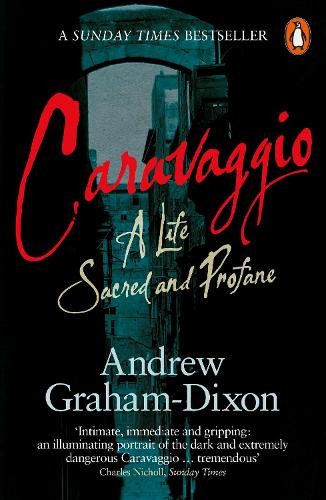
Caravaggio: A Life Sacred and Profane
(Paperback)
Publishing Details
Caravaggio: A Life Sacred and Profane
By (Author) Andrew Graham Dixon
Penguin Books Ltd
Penguin Books Ltd
12th September 2011
22nd June 2011
United Kingdom
Classifications
General
Non Fiction
Individual artists, art monographs
Paintings and painting
759.5
Short-listed for BBC Samuel Johnson Prize for Non-Fiction 2011
Physical Properties
Paperback
544
Width 129mm, Height 197mm, Spine 26mm
443g
Description
The highly-acclaimed, definitive biography of one of history's most compelling artists Michelangelo Merisi da Caravaggio lived the darkest and most dangerous life of any of the great painters. The worlds of Milan, Rome and Naples through which Caravaggio moved and which Andrew Graham-Dixon describes brilliantly in this book, are those of cardinals and whores, prayer and violence. On the streets surrounding the churches and palaces, brawls and swordfights were regular occurrences. In the course of this desperate life Caravaggio created the most dramatic paintings of his age, using ordinary men and women - often prostitutes and the very poor - to model for his depictions of classic religious scenes. Andrew Graham-Dixon's exceptionally illuminating readings of Caravaggio'spictures, which are the heart of the book, show very clearly how he created their drama, immediacy and humanity, and how completely he departed from the conventions of his time.
Reviews
Caravaggio has rarely been seen in such depth and such relief as in this marvellous biography. Andrew Graham-Dixon reads Caravaggio's paintings with the habits and assumptions, thoughts and fears of his contemporaries so that we see and feel the paintings more acutely and intensely than before. The man and his work emerge enriched and enlivened -- Neil MacGregor, Director of the British Museum
Caravaggio: A Life Sacred and Profane gave me immense pleasure and provided constant delight. It is a thrilling lesson in the art of seeing, a sensual exploration of the shadows of Caravaggio's sometimes violent but always Christian world, a detective story with a highly satisfying ending. Andrew Graham-Dixon's ability to have a reader see a painting through written language is a rare and precious gift. The book's rigour and integrity are obvious. I trusted every word and was sorry to turn the final page -- Peter Carey
Author Bio
For more than twenty-five years, Andrew Graham Dixon has published a weekly column on art, first in the Independent and more recently, the Sunday Telegraph. He has written a number of acclaimed books, including A History of British Art and Renaissance, and is twice winner of the Hawthornden Prize, Britain's top prize for writing about art. He is one of the leading figures in broadcasting in the UK, having presented seven major television series on art for the BBC.
